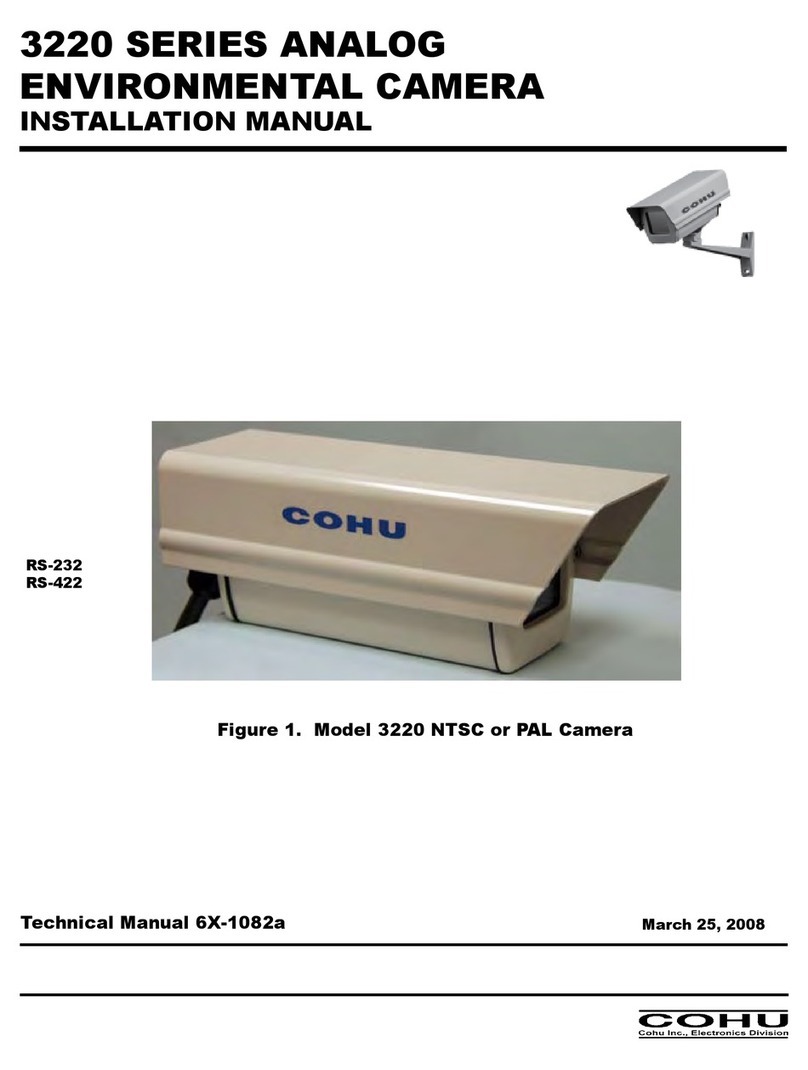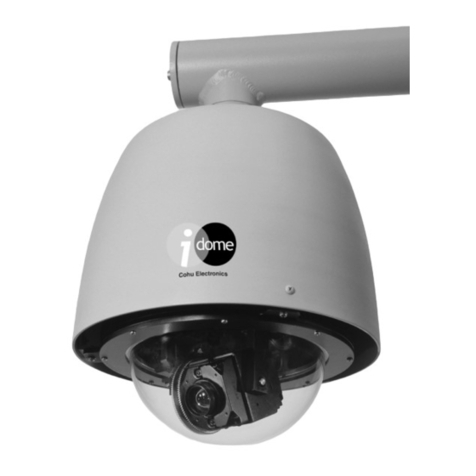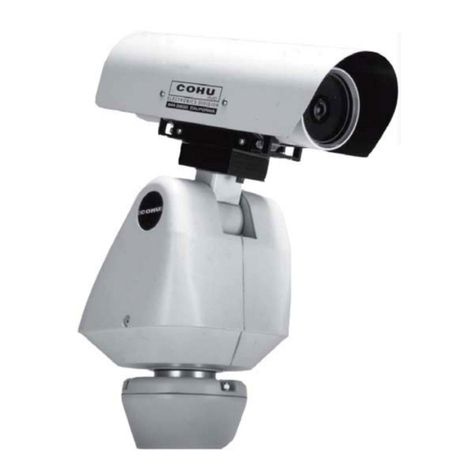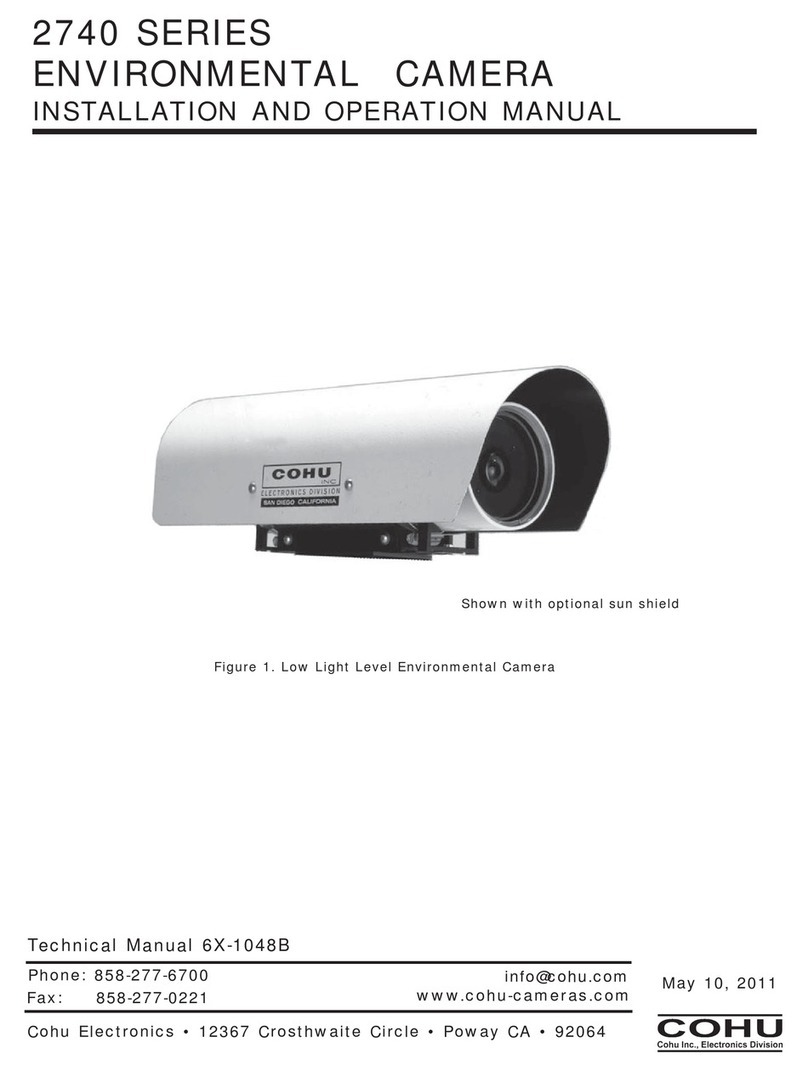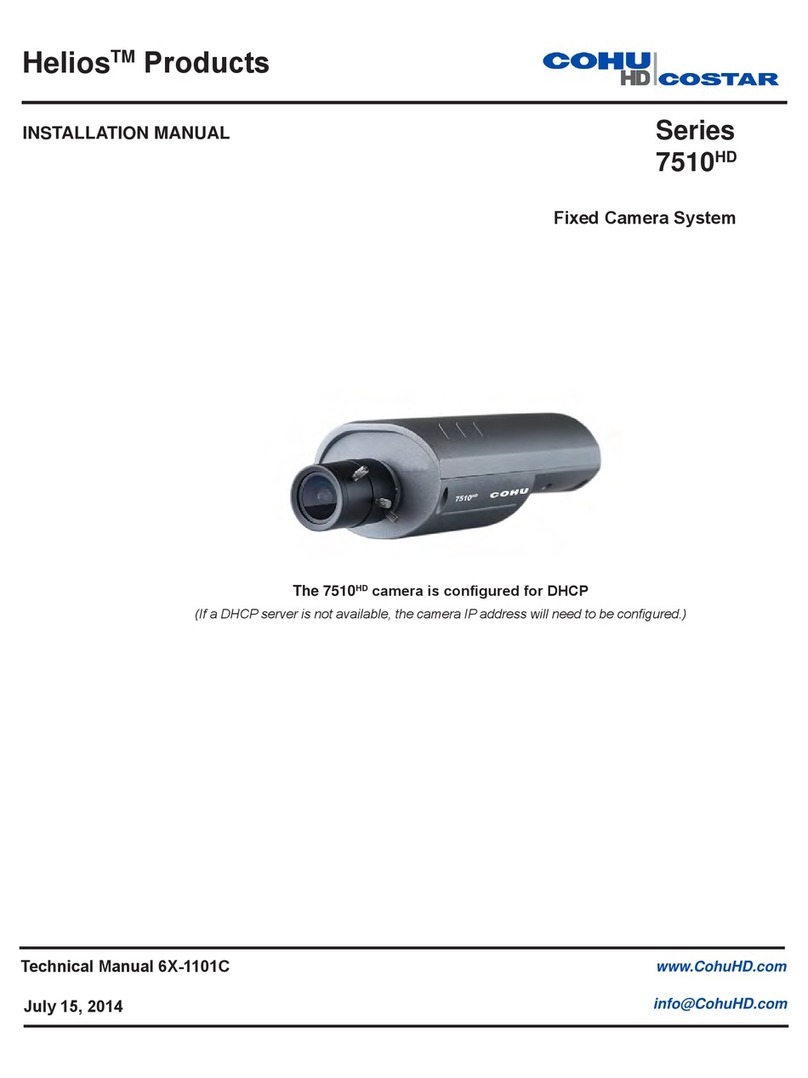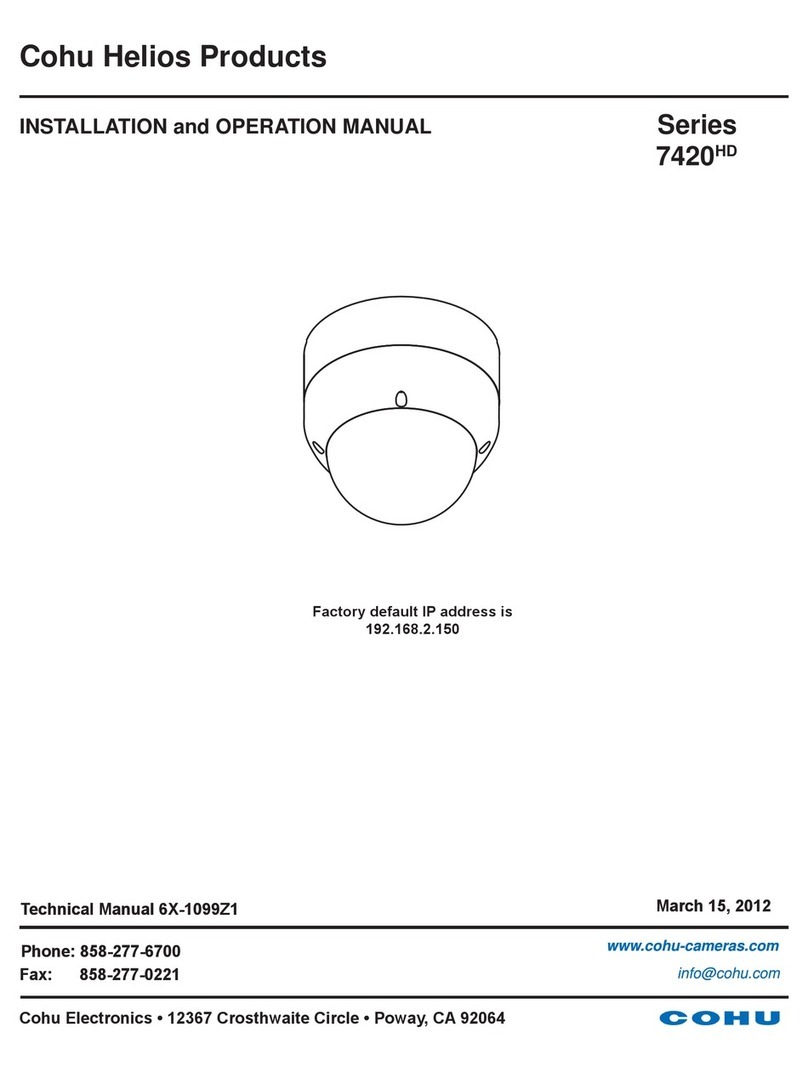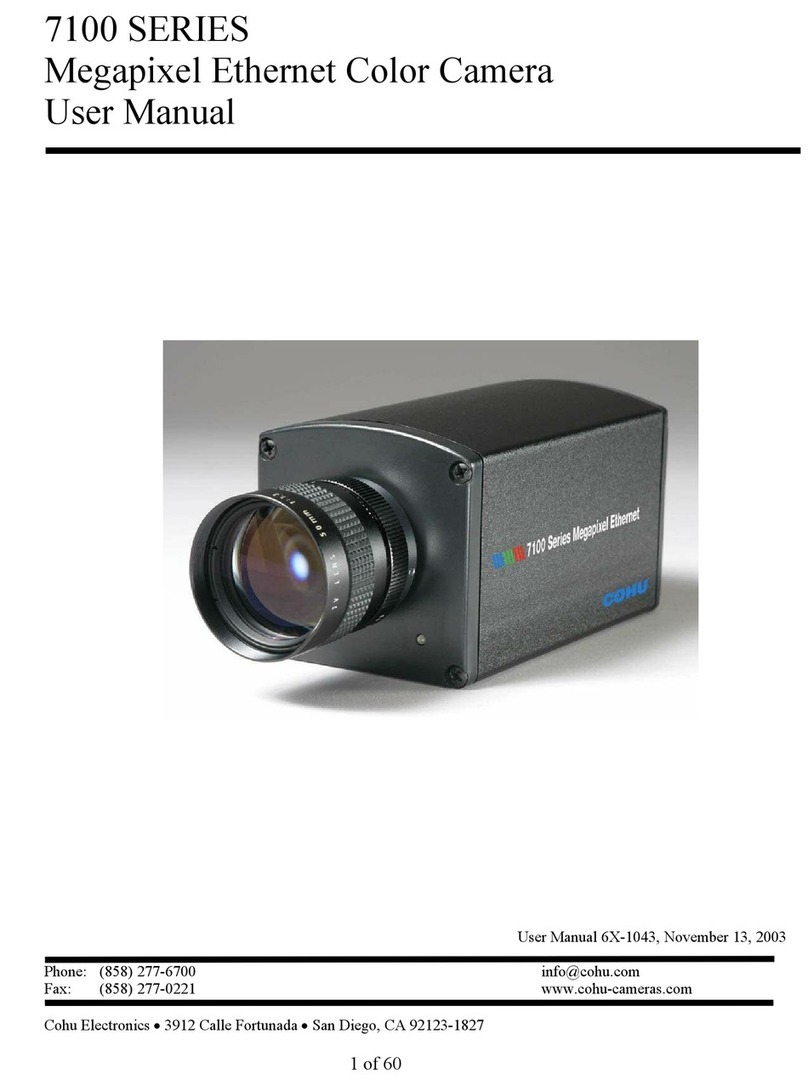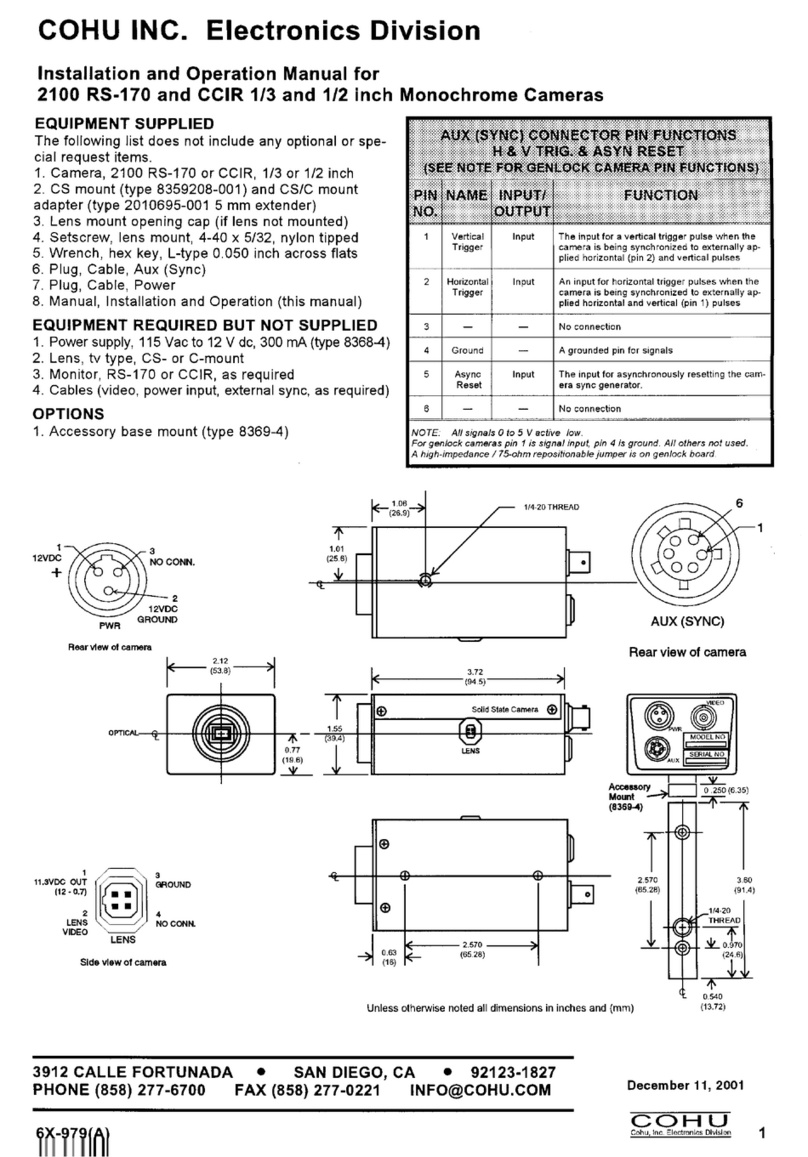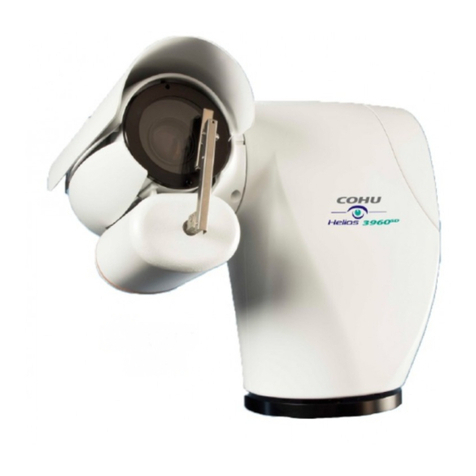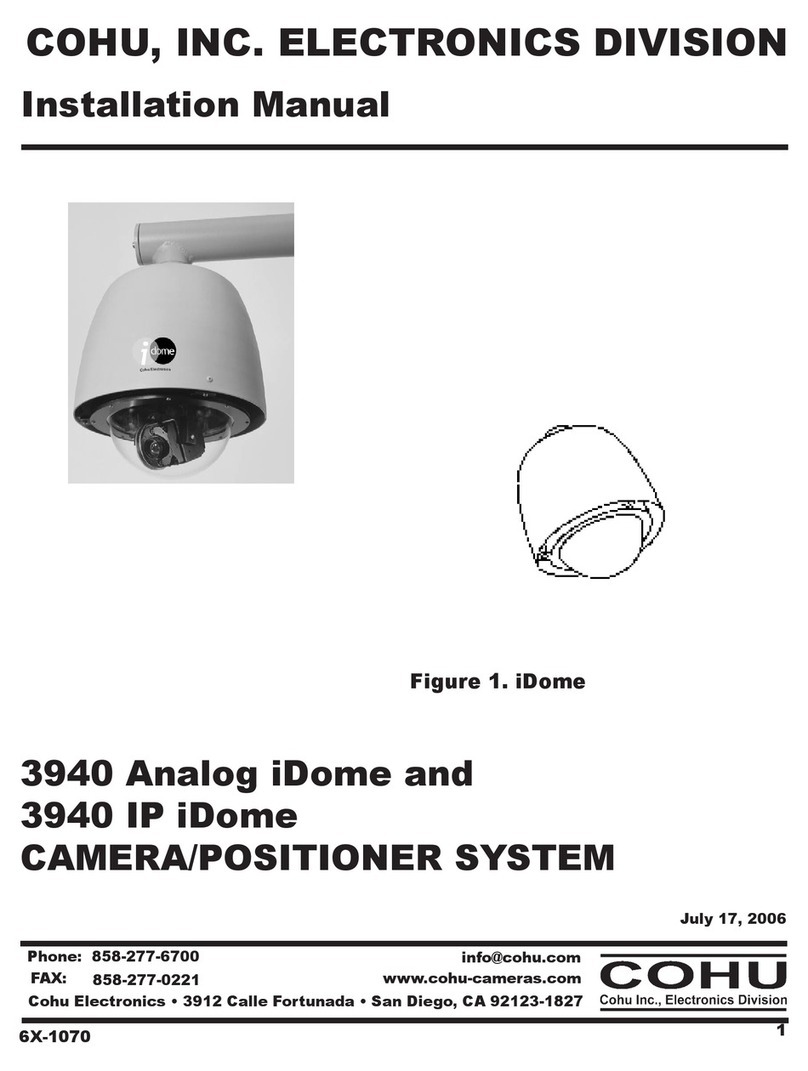
6X-1026E 3
INSTALLATION AND OPERATION
3920 iDOME
NOTE: This equipment has been tested and found to comply with the
limits for a Class A Digital Device, pursuant to Part 15 of the FCC Rules.
These limits are designed to provide reasonable protection against
harmful interference when the equipment is operated in a commercial
environment. This equipment generates, uses, and can radiate radio
frequency energy and, if not installed and used in accordance with the
instruction manual, may cause harmful interference to radio communica-
tions. Operation of this equipment in a residential area is likely to cause
harmful interference in which case the user will be required to correct
the interferecne at his own expense.
CAUTION: Changes or modications to
this device not expressly approved by
Cohu Electronics could void the user’s
authority to operate the device.
This device complies with Part 15 of the
FCC Rules. Operation is subjected to the
following two conditions: (1) this device
may not cause harmful interference and (2)
this device must accept any interference
received, including interference that may
cause undesired operation.
1.0 GENERAL DESCRIPTION
The iDome series is an integrated camera/posi-
tioner unit that integrates a high performance digital
signal processing camera, pan-and-tilt, and control
receiver for communications into one integrated
package (gure 1).
Throughout this manual the entire assembly will
typically be referred to as the “iDome.”
Specications are contained in table 6 at the end
of this manual and a model number interpretation
diagram is provided in gure 2. This diagram can
be used to interpret an existing model number. An
iDome can be operated via either RS-232 or RS-
422 communications depending on which pins of
the connector are used. Thus there is no model
number designation to reect a choice for the com-
munications mode.
WARNING
Two versions of the iDome operate from volt-
ages that can be dangerous: model 3925 (115
V ac) and model 3923 (230 V ac). Use all
appropriate care when installing and main-
taining either of these versions of the iDome.
1.1 ELECTRICAL CHARACTERISTICS
The camera uses digital signal processing. It has
an internal source ID generator. Integration control
plus a built-in video storage card provides full color
continuous video even at very low light levels.
The iDome speeds are variable with maximums
of 250° per second for pan and tilt. Pan range is
a continuous 360 degrees while the tilt range is 0
to 90 degrees from the horizontal with auto-ip at
the 90° point. There are 64 preset positions with a
preset accuracy of 0.1 degree. When responding to
standard pan-preset or manual control, the iDome
can move with a pan speed of 250° per second.
This iDome will operate in temperature ranges
from -34° to +74° C and with winds of up to 90 mph.
The enclosure protects against salt, grime, dirt, and
moisture.
The integrated receiver/driver, contained within the
iDome, communicates using Cohu protocol mes-
sages and will also control the digital DSP camera
functions. All iDome functions are operable via
either RS-232 or RS-422 serial communications.
The iDome is fully compatible with existing Cohu
controllers. In case of power failure, all 64 preset
positions are stored in nonvolatile memory.
Each iDome “address” within a surveillance sys-
tem can be selected electronically from the Monitor-
ing Center. There are no mechanical dip switches
to set at the camera, and each unit responds to the
central command only if addressed. This provides
greater integration exibility for the designer and
more dynamic camera control for the operator
1.1.1 Control Software
WinMPC
WinMPC Graphical User Interface (GUI) software
is available for setting the address and performing
eld tests when connected to a single camera. (It
cannot be used to control more than one camera at
